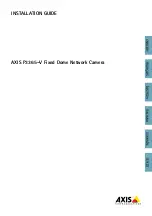
44-54
Catalyst 4500 Series Switch, Cisco IOS Software Configuration Guide - Cisco IOS XE 3.9.xE and IOS 15.2(5)Ex
Chapter 44 Configuring Quality of Service
Configuring QoS on a Standalone Supervisor Engine 6-E/6L-E or Supervisor Engine 7-E/7L-E/8-E
particular IP precedence or DSCP and strict priority can then be configured to put all packets of that
marking into that queue. In this case, the marking was used to identify traffic for strict priority
queue.
•
Traffic marking can be used to identify traffic for any class-based QoS feature (any feature available
in policy map class configuration mode, although some restrictions exist).
Two Methods for Marking Traffic Attributes
Note
This section describes
Unconditional
marking, which differs from
Policer
-
based
marking.
Unconditional marking is based solely on classification.
Method One: Unconditional Explicit Marking (using the set command)
You specify the traffic attribute you want to change with a set command configured in a policy map. The
following table lists the available set commands and the corresponding attribute. For details on the set
command, refer to the
Catalyst 4500 Series Switch Command Reference
.
If you are using individual
set
commands, those set commands are specified in a policy map. The
following is a sample of a policy map configured with one of the set commands listed in Table 44-4.
In this sample configuration, the
set cos
command has been configured in the policy map (policy1) to
mark the CoS attribute:
enable
configure terminal
policy map p1
class class1
set cos 3
end
For information on configuring a policy map, see the “Creating a Policy Map” section on page 44-51.
The final task is to attach the policy map to the interface. For information on attaching the policy map
to the interface, see the “Attaching a Policy Map to an Interface” section on page 44-51.
Method Two: Unconditional Tablemap-based Marking
You can create a table map that can be used to mark traffic attributes. A table map is a kind of two-way
conversion chart that lists and maps one traffic attribute to another. A table map supports a many-to-one
type of conversion and mapping scheme. The table map establishes a to-from relationship for the traffic
attributes and defines the change to be made to the attribute. That is, an attribute is set to one value that
is taken from another value. The values are based on the specific attribute being changed. For instance,
the Precedence attribute can be a number from 0 to 7, while the DSCP attribute can be a number from 0
to 63.
The following is a sample table map configuration:
Table 44-4
set Commands and Applicable Packet Types
set Commands
Traffic Attribute
Packet Type
set cos
Layer 2 CoS value of the outgoing traffic
Ethernet IPv4, IPv6
set dscp
DSCP value in the ToS byte
IPv4, IPv6
set precedence
precedence value in the packet header
IPv4, IPv6
set qos-group
QoS group ID
Ethernet, IPv4, IPv6
Summary of Contents for Catalyst 4500 Series
Page 2: ......
Page 4: ......
Page 2086: ...Index IN 46 Software Configuration Guide Release IOS XE 3 9 0E and IOS 15 2 5 E ...
















































